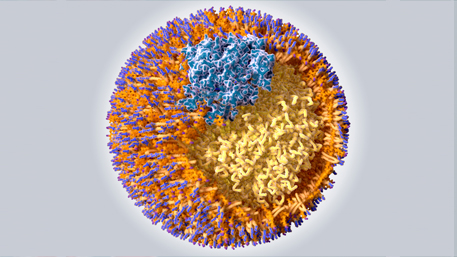
08/10/2022
Hot Topics of the Day are picked by experts to capture the latest information and publications on public health genomics and precision health for various diseases and health topics. Sources include published scientific literature, reviews, blogs and popular press articles.
Sign up MyPHGKB to receive the daily hot topic email alert.
Archived Hot Topics of the Day By Date
Distinguishing features of Long COVID identified through immune profiling
J Klein et al, MEDRXIV, August 10, 2022
SARS-CoV-2 hybrid immunity: silver bullet or silver lining?
Suryawanshi Rahul et al. Nature reviews. Immunology 2022 8
The mechanism of RNA capping by SARS-CoV-2.
Park Gina J et al. Nature 2022 8
Long-COVID treatments: why the world is still waiting After a slow start, researchers are beginning to test ways to combat the lasting symptoms of the disease.
H Ledford, Nature, August 9, 2022
Broad immunity to SARS-CoV-2 variants of concern mediated by a SARS-CoV-2 receptor-binding domain protein vaccine
G Deliyannis et al, MEDRXIV, August 9, 2022
Clinical effectiveness of SARS-CoV-2 booster vaccine against Omicron infection in residents and staff of Long-Term Care Facilities: a prospective cohort study (VIVALDI)
O Stirrup et al, MEDRXIV, August 9, 2022
Metabolomic and gut microbiome profiles across the spectrum of community-based COVID and non-COVID disease: A COVID-19 Biobank study.
MF Osterdahl et al, MEDRXIV, August 9, 2022
Persistent Presence of Spike protein and Viral RNA in the Circulation of Individuals with Post-Acute Sequelae of COVID-19
V Craddock et al, MEDRXIV, August 9, 2022
Adjusted booster schedules disperse age-dependent differences in antibody titers benefitting risk populations - Update to: Age-dependent Immune Response to the BioNTech/Pfizer BNT162b2 Coronavirus Disease 2019 Vaccination
L Muller et al, MEDRXIV, August 9, 2022
Measuring Lipoprotein(a) in Clinical Practice to Reduce the Burden of Cardiovascular Disease? Still Work in Progress.
J Osei et al, CDC Blog Post, August 9, 2022

Interactive exploration of a global clinical network from a large breast cancer cohort
N Sella et al, NPJ Diital Medicine, August 10, 2022
Leveraging reimbursement strategies to guide value-based adoption and utilization of medical AI
KP Venkatesh et al, NPJ Digital Medicine, August 10, 2022
Disclaimer: Articles listed in Hot Topics of the Day are selected by Public Health Genomics Branch to provide current awareness of the scientific literature and news. Inclusion in the update does not necessarily represent the views of the Centers for Disease Control and Prevention nor does it imply endorsement of the article's methods or findings. CDC and DHHS assume no responsibility for the factual accuracy of the items presented. The selection, omission, or content of items does not imply any endorsement or other position taken by CDC or DHHS. Opinion, findings and conclusions expressed by the original authors of items included in the Clips, or persons quoted therein, are strictly their own and are in no way meant to represent the opinion or views of CDC or DHHS. References to publications, news sources, and non-CDC Websites are provided solely for informational purposes and do not imply endorsement by CDC or DHHS.
- Page last reviewed:Feb 1, 2024
- Page last updated:May 09, 2024
- Content source:





